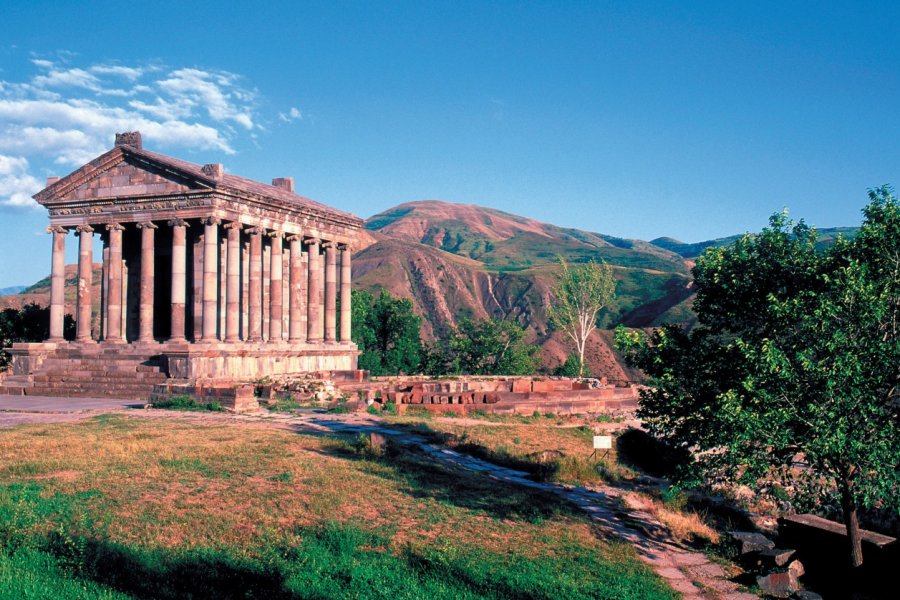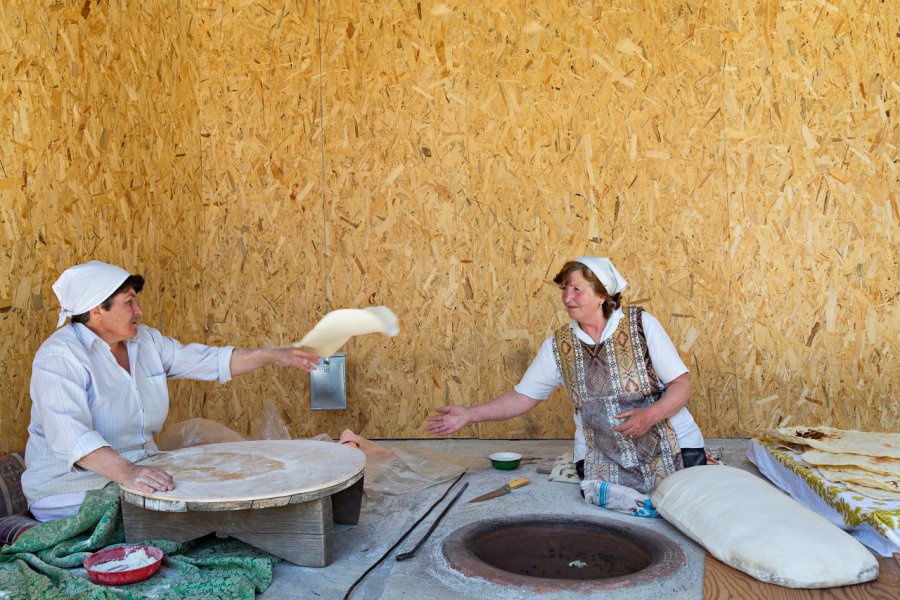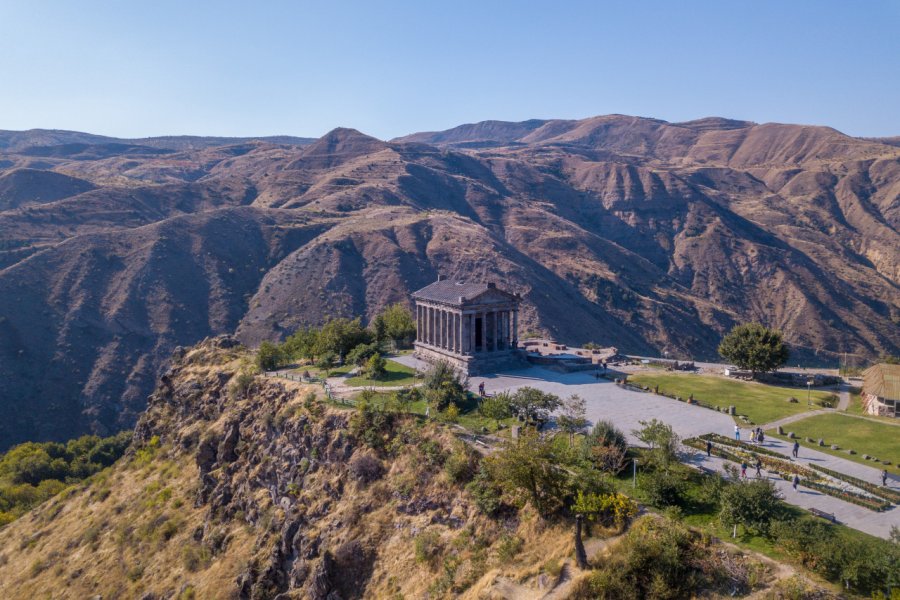Travel Guide Garni
Find an accommodation
Advertising
The excursion to the Sun Temple of Garni, usually coupled with a visit to the medieval monastery of Geghard, are among the great classics of Armenian tourism. It is one of the classics whose reputation is by no means usurped, and this first foray into the Armenian mountains, to the north-east of the Ararat plain, will convince you of the splendour of the landscapes as well as the architectural value of the monuments they contain. The road leading to Garni (28 km from Yerevan) winds through the southern foothills of the powerful Kegham Volcanic Range, overlooking the Ararat Plain, from which there is a breathtaking viewpoint from the Arch of Tcharents, halfway along the way: it was on this promontory that the great 20th century Armenian poet liked to come and contemplate Mount Ararat, which is revealed in all its splendour from the small stone arch erected here in his memory. After the peeled mountains, carved with basalt organs, the small village of Garni, at 1400 m above sea level, looks like an oasis of greenery nestling above the Azad River, a tributary of the Araxe, which has its source in the Kegham Mountains. The area around the temple is marked by signs and a high concentration of peasants selling the products of their orchards, as well as the soudjoukhs, these long braids of syrup paste reason truffled with nuts (local specialty not to be confused with the homonymous sausage). Behind the stalls stands a Roman temple with fine columns, perched on a triangular plateau 300 metres above the Azad River, which offers a sumptuous panoramic view of the surrounding mountains. This natural fortress was the site of an early fortress mentioned by Tacitus as Gornea. Devastated by the Romans, this fortress and the buildings it contained were rebuilt in 77 AD by King Tiridate I, as evidenced by the remains of the Cyclopean walls punctuated by 14 triangular towers which were restored in the 10th century by the Bagratide king Achot II. The conversion of Armenia to Christianity gave Garni the status of an episcopal see in the 5th century and even allowed the development of a city, curiously sparing the temple and its fragile colonnade from the fate of so many pagan monuments in Armenia. The architectural complex of Garni, on the other hand, was seriously destroyed by the Turks in 1638, the 1779 earthquake having ruined the temple. It will only recover in 1975, after the restoration work carried out by the Soviets, proud of the only Roman temple on the territory of the USSR.The magic of the Garni site, classified as a UNESCO World Heritage Site, has not escaped the notice of the organisers of world events. In May 2019, the Garni temple was the scene of an international festival of electronic music
What to visit Garni?
Suggested addresses Garni
Weather at the moment
Advertising
Organize your trip with our partners Garni
Transportation
Book your plane tickets
Car Rental
Boat rental
Accommodation & stays
Find a hotel
Holiday rental
Find your campsite
Tailor-made trip
Immersion travel
Services / On site
Activities & visits
Find a doctor
Garni travel inspiration
Find unique Stay Offers with our Partners
Pictures and images Garni
Other destinations nearby Garni
100 km away













